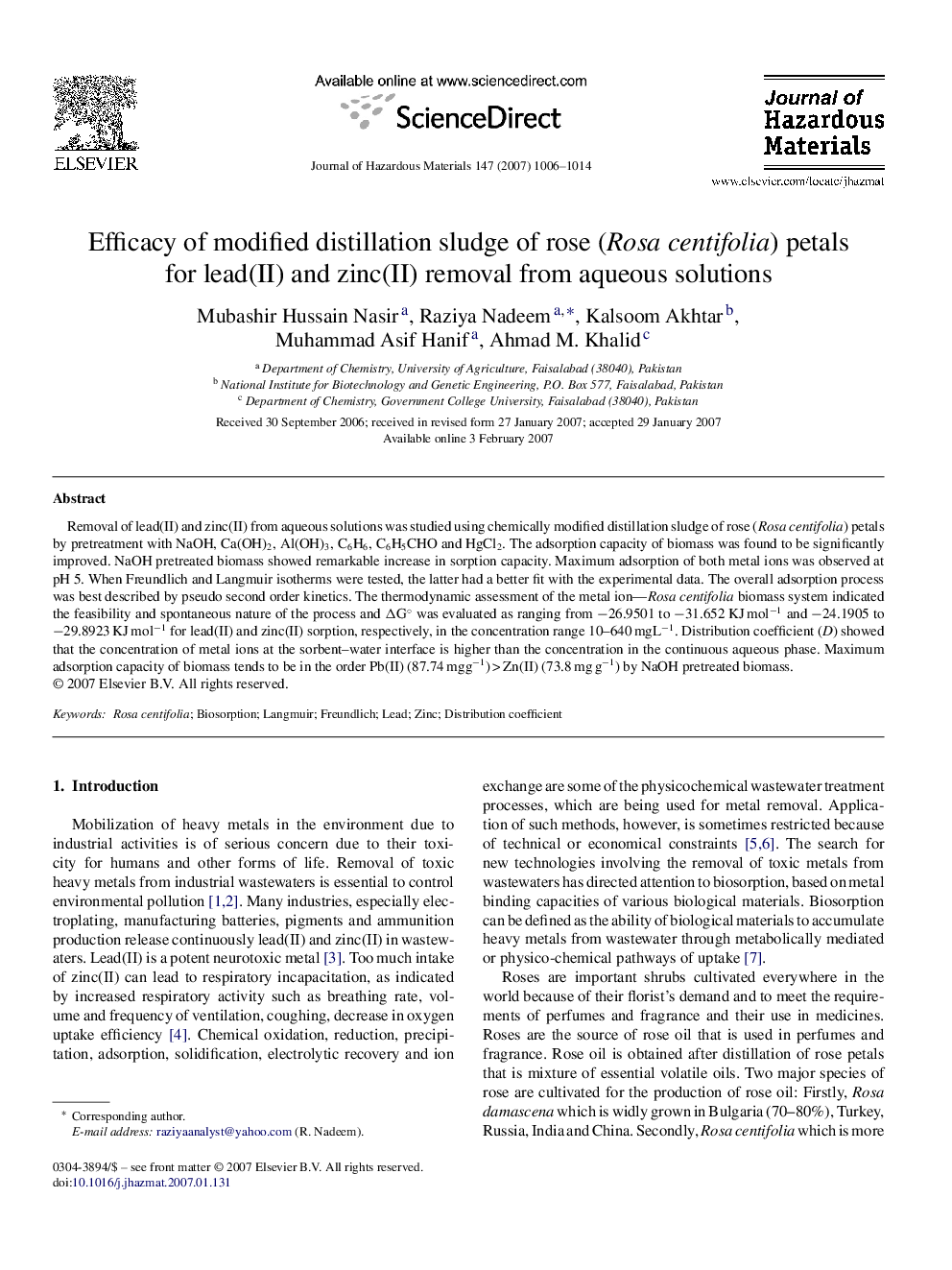| Article ID | Journal | Published Year | Pages | File Type |
|---|---|---|---|---|
| 583896 | Journal of Hazardous Materials | 2007 | 9 Pages |
Abstract
Removal of lead(II) and zinc(II) from aqueous solutions was studied using chemically modified distillation sludge of rose (Rosa centifolia) petals by pretreatment with NaOH, Ca(OH)2, Al(OH)3, C6H6, C6H5CHO and HgCl2. The adsorption capacity of biomass was found to be significantly improved. NaOH pretreated biomass showed remarkable increase in sorption capacity. Maximum adsorption of both metal ions was observed at pH 5. When Freundlich and Langmuir isotherms were tested, the latter had a better fit with the experimental data. The overall adsorption process was best described by pseudo second order kinetics. The thermodynamic assessment of the metal ion-Rosa centifolia biomass system indicated the feasibility and spontaneous nature of the process and ÎG° was evaluated as ranging from â26.9501 to â31.652 KJ molâ1 and â24.1905 to â29.8923 KJ molâ1 for lead(II) and zinc(II) sorption, respectively, in the concentration range 10-640 mgLâ1. Distribution coefficient (D) showed that the concentration of metal ions at the sorbent-water interface is higher than the concentration in the continuous aqueous phase. Maximum adsorption capacity of biomass tends to be in the order Pb(II) (87.74 mggâ1) > Zn(II) (73.8 mg gâ1) by NaOH pretreated biomass.
Related Topics
Physical Sciences and Engineering
Chemical Engineering
Chemical Health and Safety
Authors
Mubashir Hussain Nasir, Raziya Nadeem, Kalsoom Akhtar, Muhammad Asif Hanif, Ahmad M. Khalid,
